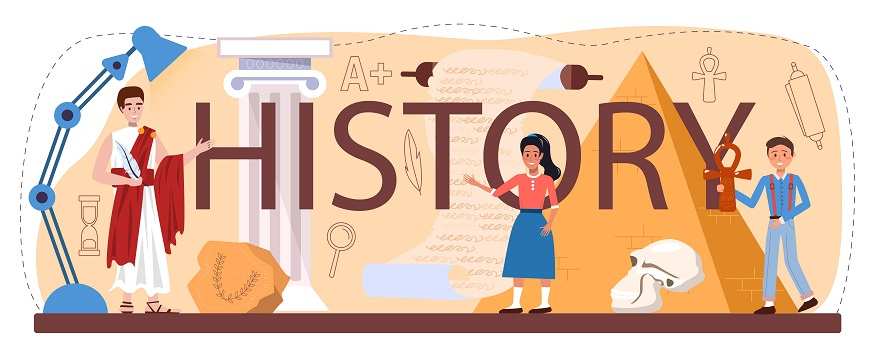
Education is a fundamental pillar of society, shaping minds, creating opportunities, and setting the foundation for innovation and progress. From ancient systems to modern-day technology, the journey of education is filled with intriguing facts that show its profound impact on individuals and societies. In this article, we dive into the most fascinating facts about education, its history, and its pivotal role in shaping the world.
The Historical Evolution of Education

Education has come a long way, evolving from oral traditions to formal schooling systems. Understanding the history of education reveals the rich journey it has taken.
- Ancient Education Systems: The oldest known schools date back to ancient Mesopotamia around 2000 BCE. Here, education focused on reading, writing, and mathematics, primarily to train scribes for administrative roles.
- Greek and Roman Influence: Ancient Greece introduced subjects like philosophy, logic, and rhetoric, with scholars like Plato and Aristotle. Romans built on Greek methods, emphasizing law, rhetoric, and oratory skills.
- Medieval Monastic Schools: During the medieval period, education was primarily managed by the Church. Monasteries provided basic education to future clergy, emphasizing religious studies.
- The Renaissance and Enlightenment Eras: Education expanded beyond religious studies to include science, art, and literature during the Renaissance. The Enlightenment further fueled intellectual growth and promoted public education.
- The Birth of Modern Education: In the 19th and 20th centuries, formal schooling became mandatory in many countries. Public schools, universities, and standardized curricula became the foundation of modern education systems.
The Role of Education in Personal Development

Education is more than academic knowledge; it fosters personal growth, social skills, and emotional intelligence.
- Cognitive Development: Education enhances cognitive skills, helping students develop problem-solving abilities, critical thinking, and creativity.
- Emotional Intelligence: Schools teach students to manage emotions, build resilience, and develop empathy, essential skills for personal and professional relationships.
- Social Skills: Education helps individuals learn how to work collaboratively, communicate effectively, and develop cultural awareness.
- Self-Discipline and Responsibility: Education instills discipline, time management, and a sense of responsibility, qualities necessary for personal success.
Surprising Facts About Education Around the World
Here are some fascinating facts about global education systems that highlight its diversity and challenges.
- World’s Largest School: City Montessori School in Lucknow, India, is the world’s largest school, with over 50,000 students.
- Highest Literacy Rate: Finland and Norway boast some of the highest literacy rates globally, above 99%.
- Education Spending: In 2023, the United States spends approximately $14,000 per student, while Finland spends around $12,000 per student.
- Primary Education in Developing Countries: Around 258 million children and youth worldwide do not attend school, with a large portion in developing countries.
- Languages in Education: India has the most diverse linguistic education system, offering instruction in over 30 languages.
The Impact of Technology on Education

Technology has revolutionized the education sector, enhancing accessibility, engagement, and learning outcomes.
- E-Learning Platforms: E-learning platforms like Coursera, Udacity, and edX provide accessible education, allowing millions to learn from home.
- EdTech Tools for Classrooms: Smartboards, tablets, and online assessments are now standard in many schools, making education interactive and tailored.
- Artificial Intelligence in Education: AI is increasingly used in personalized learning, helping students progress at their own pace by adapting content based on individual needs.
- VR and AR for Immersive Learning: Virtual reality (VR) and augmented reality (AR) offer students immersive experiences, like virtual museum tours or science experiments, without leaving the classroom.
- Digital Divide: Despite advancements, a significant digital divide exists, particularly in developing regions. Many children still lack access to digital resources.
Key Statistics About Education Today

Statistics highlight the successes, challenges, and future potential of education worldwide.
- Global Literacy Rate: The global literacy rate is approximately 87%, with significant disparities between developed and developing nations.
- Education and Employment: Studies show that each additional year of schooling increases an individual’s earnings by 10%.
- Gender Inequality: Approximately 129 million girls are out of school worldwide, highlighting the need for gender-equal educational policies.
- Dropout Rates: In the United States, around 5% of high school students drop out each year, with economic and social factors as primary reasons.
- Future of Remote Learning: Post-pandemic, online learning is expected to remain prevalent, with the e-learning market projected to reach over $375 billion by 2026.
Why Education Is Crucial for Economic Growth
Education fuels economic development, increasing workforce productivity and fostering innovation.
- Higher Earning Potential: Education equips individuals with skills that lead to better-paying jobs, reducing poverty rates.
- Increased Productivity: Educated individuals contribute more effectively to the workforce, leading to increased productivity and economic growth.
- Entrepreneurial Opportunities: Education encourages innovation and entrepreneurship, essential for a thriving economy.
- Healthcare and Welfare: Education raises awareness about health practices, reducing healthcare costs and improving quality of life.
- Social Cohesion: Educated societies tend to be more stable, with lower crime rates and greater political participation.
The Future of Education: Trends and Predictions
As education evolves, several key trends are shaping its future.
- Focus on STEM Education: Science, Technology, Engineering, and Mathematics (STEM) are gaining importance, preparing students for high-demand jobs in tech-driven economies.
- Project-Based Learning: Schools are adopting project-based learning to teach students critical skills like collaboration, research, and time management.
- Personalized Education: Technology allows for personalized learning experiences tailored to students’ strengths and weaknesses.
- Lifelong Learning: With the fast-paced changes in technology, lifelong learning is becoming necessary for career adaptability and personal growth.
- Focus on Soft Skills: Besides technical skills, schools are emphasizing soft skills like communication, problem-solving, and teamwork.
Educational Inequality and Its Social Implications

Education inequality remains a significant issue worldwide, affecting social stability and economic progress.
- Income Inequality: Lower-income families often lack access to quality education, perpetuating the cycle of poverty.
- Rural and Urban Divide: In many countries, rural areas face a lack of educational resources compared to urban centers.
- Gender Inequality: Girls in many countries face barriers to education, from cultural norms to economic constraints.
- Ethnic and Racial Disparities: Ethnic minorities often experience educational disparities, leading to lower socioeconomic opportunities.
- Educational Reform Efforts: Governments and organizations are implementing policies to bridge these gaps, but challenges remain.
Final Thoughts on the Power of Education

Education is transformative, offering hope, empowerment, and a pathway to a brighter future. It’s a fundamental right that fosters equality, peace, and progress. As we look toward a future where technology, inclusivity, and lifelong learning will shape education, the need to invest in accessible, quality education for all remains essential.































